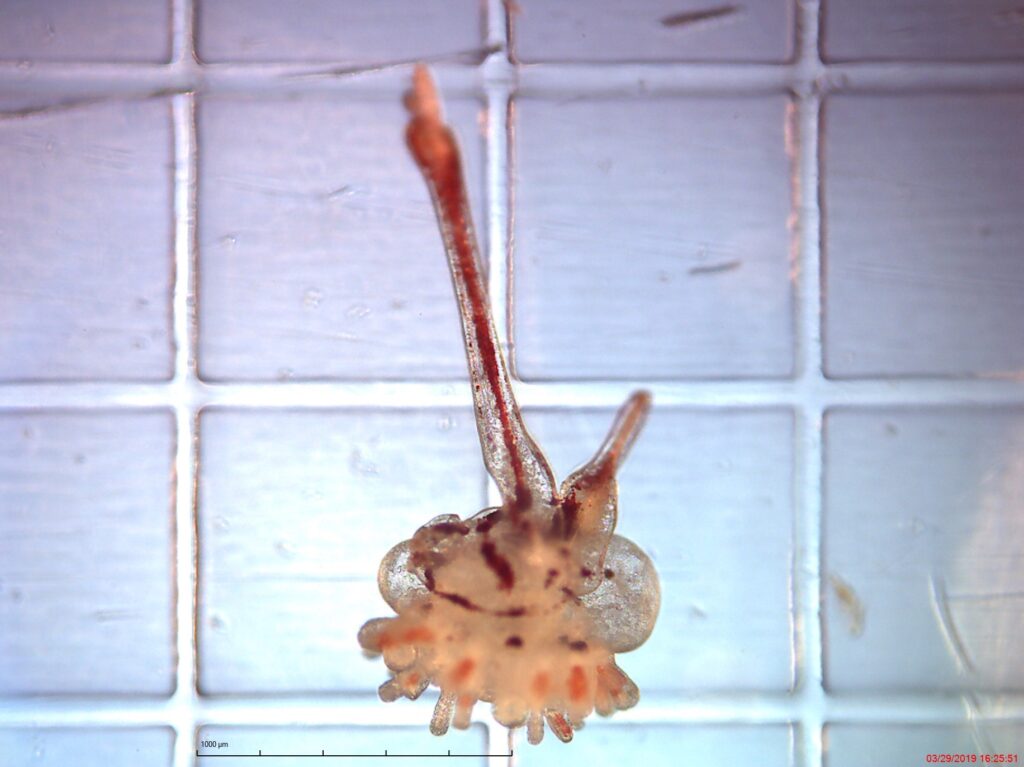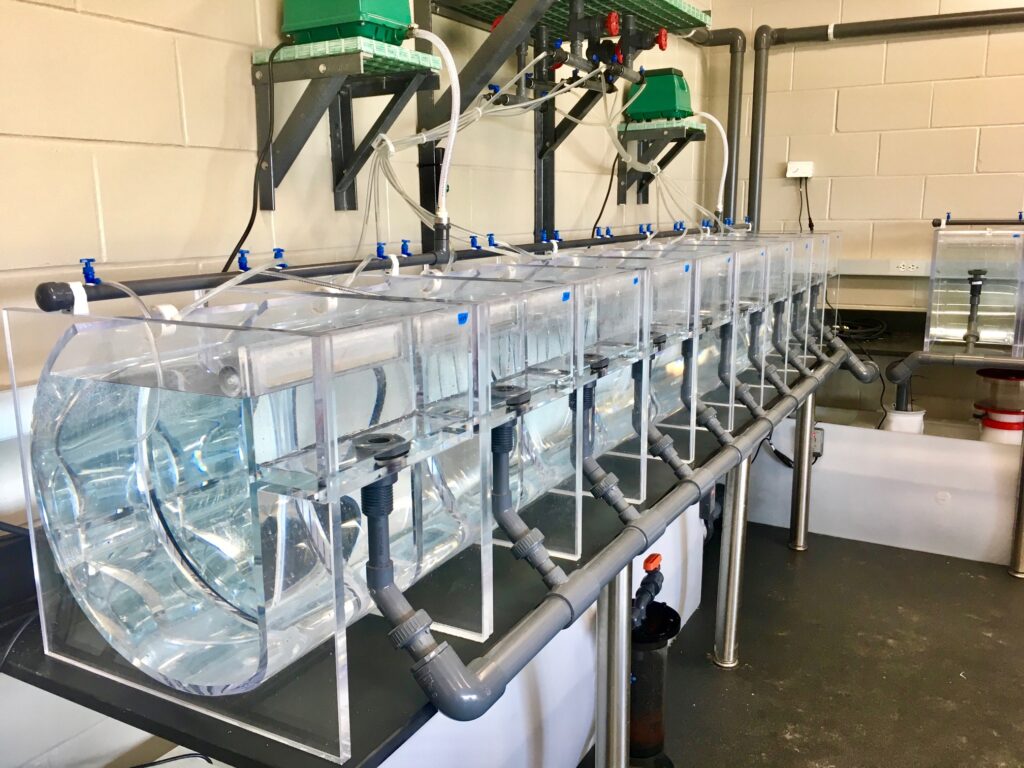By Brad Buck, UF/IFAS Communications
Scientists call long-spined sea urchins “the lawn mowers of the reefs” because they eat algae that could otherwise smother reef ecosystems and kill corals.

That’s why researchers affiliated with the University of Florida Tropical Aquaculture Lab (TAL), who work at the Florida Aquarium’s Conservation Campus in Apollo Beach, are trying to raise as many urchins as possible.
Aaron Pilnick, a post-doctoral researcher at TAL, led newly published research that identifies substrates that help long-spined sea urchins – scientifically known as Diadema — grow from larvae to juveniles in a lab setting. A substrate is the surface on the sea floor on which an organism lives or obtains its nourishment.
Researchers found that sea urchin larvae grew into juvenile sea urchins on two types of algae commonly found on the floor of Caribbean coral reefs. They also found that the characteristics of a substrate, such as a rough texture, are important.
To reach their findings, UF/IFAS scientists relied on the Florida Fish and Wildlife Conservation Commission to bring adult urchins from the Florida Keys to the Florida Aquarium Conservation Campus. There, researchers induced the urchins to spawn in captivity.
Larvae grew in a highly specialized, 10-gallon fish tank for about 40 days. Then, scientists used a microscope to document the size, shape and structure of live specimens during the final stages of larval development. They then transferred the larvae to petri dishes, containing seawater and various substrates and recorded if they became juvenile sea urchins.
Restoring the long-spined sea urchin is critical because in the early 1980s, disease nearly wiped out the species. That die-off almost immediately led to algae overgrowing reefs.

“We are trying to restore these vital ecosystems by growing corals in ocean nurseries and planting them back to areas where they used to thrive. However, these reefs also need more urchins to protect corals from algae,” said Pilnick, who led the research while a doctoral student in the UF/IFAS College of Agricultural and Life Sciences.
To restore sea urchins, it’s important to know their growth patterns. Urchin larvae float and swim around the ocean until they find a place on the sea floor to attach and transform into a juvenile sea urchin.
This process, called “settlement,” is similar to how a pupa turns into a butterfly. By developing the ability to grow this species, scientists can study settlement in the lab and infer certain things about its ecology.
Now that UF/IFAS scientists have identified conditions for long-spined sea urchins to grow from larvae to juveniles, they’re studying how to get them to mature to adulthood, said Josh Patterson, a UF/IFAS associate professor of restoration aquaculture in the School of Forest, Fisheries, & Geomatics Sciences, Pilnick’s supervisor and a Florida Sea Grant-affiliated researcher.
“For many marine animals, the transition from larvae to adults is a critical part of the life cycle. This research is groundbreaking because it’s the first time this transition has been investigated in this important species,” said Patterson, a co-author on the new study.
This piece was originally published at https://blogs.ifas.ufl.edu/news/2023/09/12/uf-scientists-find-good-places-to-grow-long-spined-sea-urchins-a-starting-point-to-restore-the-lawn-mowers-of-the-reefs/
Sign up for The Invading Sea newsletter by visiting here. If you are interested in submitting an opinion piece to The Invading Sea, email Editor Nathan Crabbe at ncrabbe@fau.edu.



